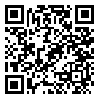BibTeX | RIS | EndNote | Medlars | ProCite | Reference Manager | RefWorks
Send citation to:
URL: http://journal.rums.ac.ir/article-1-1566-en.html
Background
and Objective: Worry
is a common, and potentially disabling, feature among many individuals with
anxiety. The aim of this study was to assess the relationship between cognitive
emotion regulation styles and thought action fusion with students worry.
Materials and Methods: This a cross- sectional study. Includes
200 students of East Azerbaijan in 2012-2013 academic years that have been
selected by cluster sampling method in several phases. Cognitive emotion
regulation Questionnaire (CERQ-short), Penn state Worry Questionnaire and
revised Thought-Action Fusion questionnaires (TAF-R) have been used for data
collection. The data was analyzed by pearson correlation coefficient and
multiple regression analysis.
Results:
The results
showed that acceptance (r= -0.221, p= 0.002), positive refocus (r= -0.262, p=
0.001) and refocus on planning strategies (r= -0.322, p= 0.001) were all in
significant negative correlation with worry. But catastrophizing strategies (r= 0.379, p= 0.001) had a significant
positive correlation with worry. Also responsibility for positive thoughts (r=
0.674, p= 0.001) and responsibility for harm avoidance thoughts (r=0.577, p =
0.001) had a significant positive correlation with worry. The results of
multi-variable correlation coefficient with enter method indicated that
cognitive emotion regulation strategies and (R2=29%) also
thought-action fusion factors has (R2=54.6%).
Have a role in explaining worry.
Conclusion: The results indicated
correlation between the TAF and maladaptive strategies with worry. Thus, it
seems that occurrence of cognitive bias such as TAF and maladaptive strategies
increase the individual’s vulnerability to worry.
Key
words: Cognitive
emotion regulation strategies, Thought-action fusion, Worry
Funding: This research was funded by
East Azarbiejan Payam-e- Noor University.
Conflict
of Interest: None declared.
Ethical
approval: The Ethics Committee of East Azarbiejan Payam-e- Noor University approved the study.
How to cite this
article:
Ghaffari M, Rezaei A. Investigating the Relation of
Cognitive Emotion Regulation Strategies and Thought-Action Fusion with Worry
Students. J Rafsanjan Univ Med Sci 2014 12(12): 975-990. [Farsi]
Received: 2012/12/9 | Accepted: 2013/06/17 | Published: 2014/04/20
| Rights and permissions | |
 |
This work is licensed under a Creative Commons Attribution-NonCommercial 4.0 International License. |






